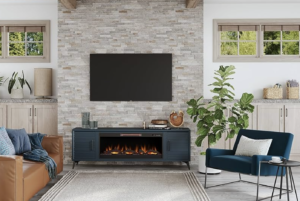
The number of home workers has more than doubled globally in recent years, and more and more people and businesses are moving towards a more flexible work solution. However, before you jump in and prepare to work from home, there are a few important factors to consider. First, you’ll need to establish what kind of workspace you need – is it a long-term career change or just temporary? Will your available space accommodate your work, storage and meeting requirements? Once you have a clear vision, make a plan and stick to a budget.
The following tips are for people who want to create a home office ideas and options, which vary in size and budget, so that you can choose the area of the home office that is right for you.

Home office outside ideas
For those with larger space requirements and larger budgets, consider building a specially designed outdoor studio. If you have the space, but would prefer something a little less permanent, buying or leasing a portable structure like a cabin, shed, or container could be a great option.

Portable structures often have the added benefit of minimizing council consent requirements, but be sure to check with your local council for relevant resources and planning consents in your area. It is important to remember that the containers were never intended for housing.

To survive harsh ocean conditions, they contain a long list of nasty chemicals like phosphorus, chromate, arsenic, and lead. This means you need to sandblast the interior and remove the hardwood floor before beginning your transformation.

Home office room adding ideas
Two burning questions need to be answered before consulting the experts about adding a room. Where will it go and does the benefit outweigh the cost? If working from home is a long-term career option, then increasing your home’s footprint is probably worth the investment. If your budget doesn’t stretch until adding a room, consider utilizing floor-to-ceiling space and add a mezzanine level.

Home office ideas to turn an attic into an office
Attics are tempting spaces to reclaim and transform. It’s worth noting that they are not designed to handle typical living area loads and may require strengthening, which will significantly increase the bottom line.

Access and limited headroom are other important considerations, such as installing windows for natural light and ventilation. Despite the work and costs involved, a usable, convertible attic office will add functionality and value to your home.

Create an “office”
Don’t have a whole room to dedicate to an office? Convert the closet! Just make sure it can handle the task, as many cabinets are only slightly deeper than the width of a coat hanger. Opt for pocket folding or sliding doors, and try to keep desk space free by installing wall shelving or table tops.

If you are new to DIY, be sure to include labor (electrical and construction) and materials in your budget. Create an inspiring place to work by adding wallpaper or a bold paint color to the walls. The seats will need careful consideration as they will have to be carefully accommodated in the space or else they will be pushed away at the end of the workday.

A stool is a great option for an “office”. Don’t have a free closet? With a little creativity, antique cabinets and desks can be transformed into small workstations that house most of your home needs.

Making an Office
Station With technology increasingly streamlined, an entire room dedicated to a home office isn’t always necessary or practical. Small spaces such as corners or countertops can be ideal office stations. Since these spaces tend to be in public view, such as in the kitchen or hallway, your workstation needs to make a design statement, be highly organized, and must not obstruct foot traffic.

Home office ideas for using space under stairs
Space under stairs is often wasted, so why not tidy it up and use it as a home office? Like the ‘office’, space here is limited, so you’ll need to make sure your office essentials fit. Add a built-in desk, shelving, or tabletop for storage, and if your budget allows, why not add drawers?

Home office ideas for using a spare room
You may have a spare room, but due to circumstances such as family visiting regularly or children coming home from school or college on vacation, it cannot be turned into a spare room. home Office. Dual-function furniture, like the Murphy bed, is a great option, providing a decent-sized workstation but converting to a bed when you need it.

Alternatively, consider dividing an area like a workspace with built-in shelving and a trestle table that can be folded down when not in use. Install a built-in dual-function flat panel that functions as both a monitor and a television.





